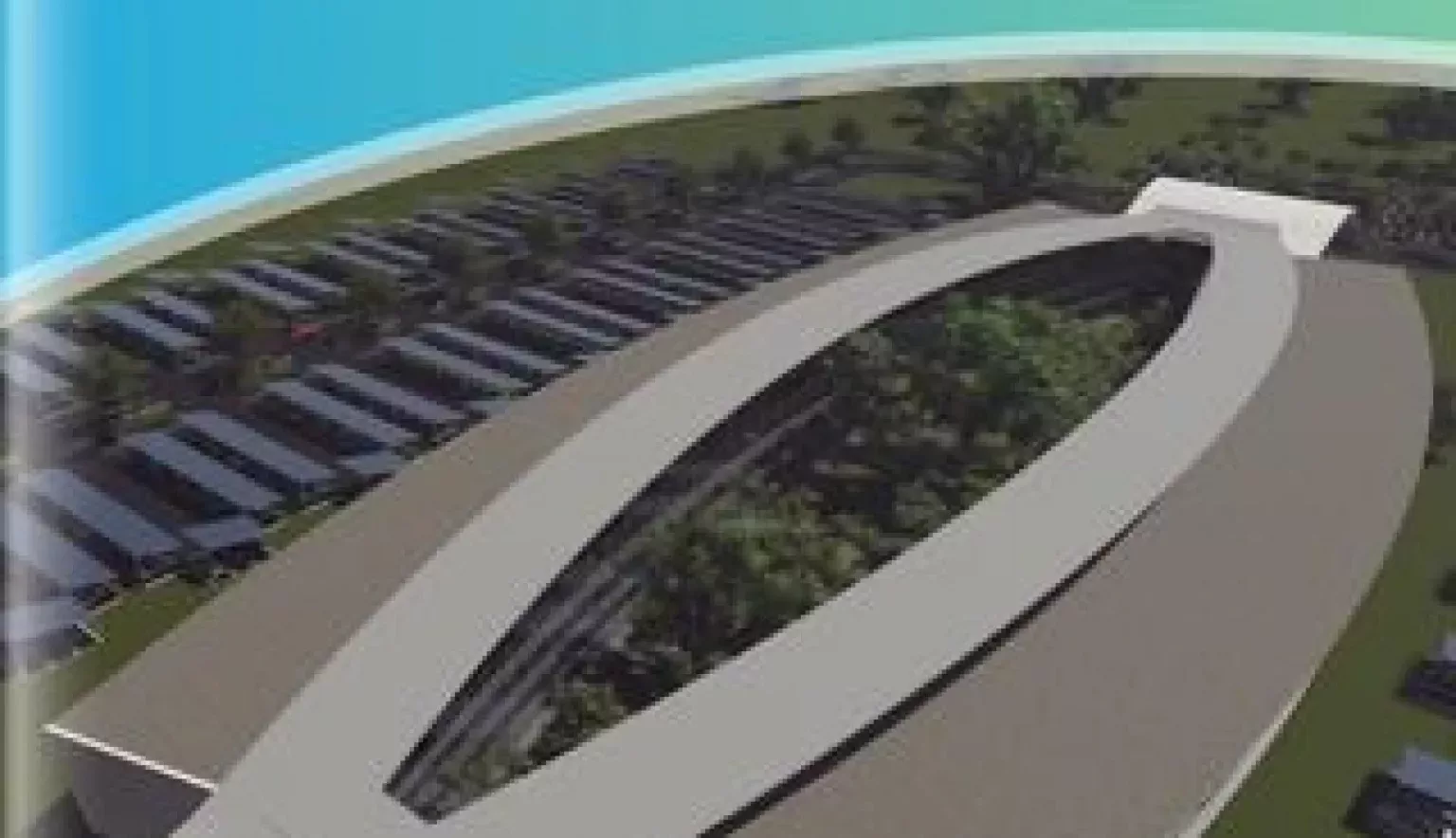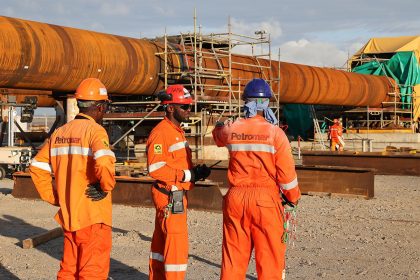Utilising the latest technologies and solutions, Eco-Industrial Solutions and the Limpopo Eco Industrial Park are set to raise the continent’s sustainability benchmark.
INDUSTRY NURTURING NATURE
Eco-industrial development has become a hot topic in the past decade. Encompassing a broad range of environmentally sustainable solutions, addressing anything from water pollution to energy management to air quality, the term has been pushed to the top of the agenda for the private and public sector alike.
However, whilst a number of regions have been heralded for their innovative eco-friendly concepts, such as Singapore with its buildings that blend with nature, the African continent continues to lag behind the rest of the world on this front.
South Africa alone emits millions of tonnes of carbon dioxide per year, largely down to its continued reliance on coal-fired power plants. In response, the national government has revealed that it is looking to reduce harmful emissions by 34 percent by 2020, an initiative that will require coordinated action from all influential parties.
Eco-Industrial Solutions (Pty) Ltd (EIS), in particular, is one company that is likely to play a crucial role in facilitating these changes.
“EIS’s slogan is ‘industry nurturing nature’, a motto that outlines its vision of finding techno-economically viable solutions to the challenges facing humanity today, and of promoting industrialisation in a way that is beneficial to local communities as well as the environment,” says Deshika Kathawaroo, CEO of EIS.
In pursuit of this inspiration, the firm is working to develop the first zero solid-waste eco-industrial park in Africa, known as the Limpopo Eco-Industrial Park (LEIP).
EMPOWERING INDUSTRY
“The LEIP is a direct response to reclaiming Africa’s rightful place in the global industrial village by establishing Africa’s and the world’s first zero solid-waste eco-industrial and integrated nature park,” states Webster Mfebe, the Chairman and Director of both EIS and LEIP.
“This project will underscore the indispensable symbiotic relationship between people, planet and profit by demonstrating their mutually beneficial co-existence, thereby preserving mother earth for future generations.”
Located in Musina on over 6,400 hectares of land, the park that currently remains in the planning phase is designed as a sustainable industrial development with 80 chalets in an integrated nature reserve with 2,286 hectares of environmentally sensitive tourism area; two residential eco-estates in Musina Eco-Housing Estate and Singelele Equestrian Estate, comprising a total of 3,797 and 903 units, respectively; gasification plants; syngas production and clean-up; a blended mix of PV solar, syngas and steam combined-cycle; and base load power for industries from Eskom. Solar PV panels for 35 MW power will be installed for agro-processing, buildings and water heating.
However, and arguably most importantly, plasma waste gasifiers will be introduced here – a well proven commercially available technology that Katharawoo believes will be fundamental to the future of eco-industrial development.
While many companies have utilised the technology in turning waste to energy, EIS will look to take this a step further and apply it to close the region’s industrial loops, eliminating the environmental and social problems that arise through the disposal of waste.
“The LEIP’s zero-solid waste and near-zero gas emission goals aim to reduce, eliminate, or prevent pollution at its source, where possible,” she states. “Our primary tool to achieve this strategy is integrating plasma gasification into a major industrial system.
“People and governments will quickly realise that such is entirely possible through plasma gasification, and this realisation will no doubt lead to closer inspections and understanding, and in turn increase the application of plasma solid waste gasification technology in various industries throughout the world,” explains Dr Pieter du Toit, Founding member of EIS and Executive Project Director for the LEIP.
Leveraging this, LEIP’s heavy industries will be based on a fossil fuel-free feedstock, ensuring a closed loop system is maintained throughout the park.
A COLLABORATIVE APPROACH
This innovative approach is expected to effectively address a broad range of Musina’s development constraints, creating approximately 35,000 new jobs and directly contributing an estimated R6.6 billion to GDP within the first three years of its operation.
“The LEIP will contribute towards local community development through socioeconomic and enterprise development, local ownership and local job creation,” says Kathawaroo.
Having worked closely with municipal, local and national government, various inputs were integrated into the design, allowing the project to become a collaborative effort that will effectively help to address a number of initiatives, including the National Development Plan, the Green Economy Plan, and the country’s Sustainable Development Goals.
The Musina Local Municipality itself, for example, is a development partner in the project, holding a 10 percent stake, whilst the Lepelle Northern Water Utility has signed an agreement to become the park’s water service provider.
Equally, Transnet intends to operate the intermodal terminal facility within the confines of the LEIP as a dry port extension of a sea port, expected to have an initial storage capacity of 50,000 units that may eventually expand to eight times this number, and adding a train ferry that will be able to carry roughly 1,000 vehicles per day across the Beitbridge-Zimbabwe border.
“We have come to realise that, with the economic recession that our country is going through, it is only through collaboration and strategic partnerships that a ground-breaking megaproject such as the LEIP can be realised,” adds Kathawaroo. “The LEIP will set new standards for sustainable development which shows that, through the effective management of engineering and technology, industrial systems can be designed as virtually closed loop systems.”
The project is also expected to become a benchmark for the South African government in helping to further a policy of regional economic integration. Off the back of the LEIP’s success, Mfebe believes that similar practices and implementations can be replicated in strategic economic centres across the entire African continent.
“The innovative and technologically driven eco-industrial park bears testimony to the practical realisation of the fourth industrial revolution in Africa, showcasing industrial solutions conceptualised by South Africans for Africans, thereby leap frogging processes for the inclusive and sustainable development of Africa’s people,” he says.
“South African President Cyril Ramaphosa’s vision of a ‘New Dawn’, predicated on the twin cardinal pillars of ‘Renewal and Rebuilding’ and driven by his Thuma Mina/Send Me Campaign, finds resonance with what the LEIP project is all about. We, like the majority of South Africans, remain spellbound by his incisive and inspiring leadership.”
ENABLING DEVELOPMENT
This emphasis on local development is an ethos that EIS will ensure is maintained throughout the LEIP, evident in a broad range of initiatives that are focused on aiding the local population.
Alongside the creation of 35,000 new direct jobs, EIS is looking to ensure that a number of other social benefits are achieved, from the inclusion of all demographics to the enhancement of personal development.
“The LEIP will be designed to ensure that local women, youth and disabled people benefit from the project, whilst it will also feature a SMME incubation centre to encourage local entrepreneurs, by providing support services and facilities at subsidised costs to startup businesses,” explains Kathawaroo.
“Further, the housing developments will be integrated with the natural environment and include four schools, a children’s hospital as well as local shopping, community centres and places of worship.”
Education will also be heavily promoted within the park in the aim of encouraging continual sustainable development amongst future generations. As part of this, the LEIP will be introducing an industrial ecology facility in collaboration with local universities, helping to keep industrial developments headed in the right direction.
“The LEIP is honoured to forge strategic partnerships with local universities, helping to power innovation, research and development, community engagement and literacy and numeracy, amongst other things,” adds Kathawaroo. “Such collaborations will allow us to strengthen the LEIP’s research capacity to facilitate and establish best practice in industrial ecology, community empowerment and academic citizenship.”
FROM CONCEPT TO REALITY
Currently in Phase One, with the final bankable feasibility study being conducted by EIS, LEIP and the project’s associated partners, the majority of plans for the project are readily in place.
“Subject to obtaining funding to complete this study, we are confident that we can achieve financial close within six months following this,” reveals du Toit. “Currently, we anticipate that construction on both the LEIP’s basic infrastructure and housing will begin next year, to be completed within three years.”
Situated at the northern tip of the Limpopo province, an area commonly referred to as the gateway into Africa, the LEIP stands to be crucial in Musina’s vision of becoming a vibrant, viable and sustainable continental hub.
“The Limpopo Province is blessed with an abundance of natural resources, accessible labour and existing infrastructure, and the LEIP is in an ideal location to utilise these to promote inter-regional trade, something that we are hoping to see much more of in years to come,” du Toit adds.
Moving forward, there is feeling of confidence surrounding the project, and an expectancy that its success will bring prosperity to not only South Africa, but the wider region.
Mfebe concludes: “We aim to create value for all investors and local communities in which the project is situated for the advancement of not only the town of Musina, but for the rest of South Africa and Africa.
































